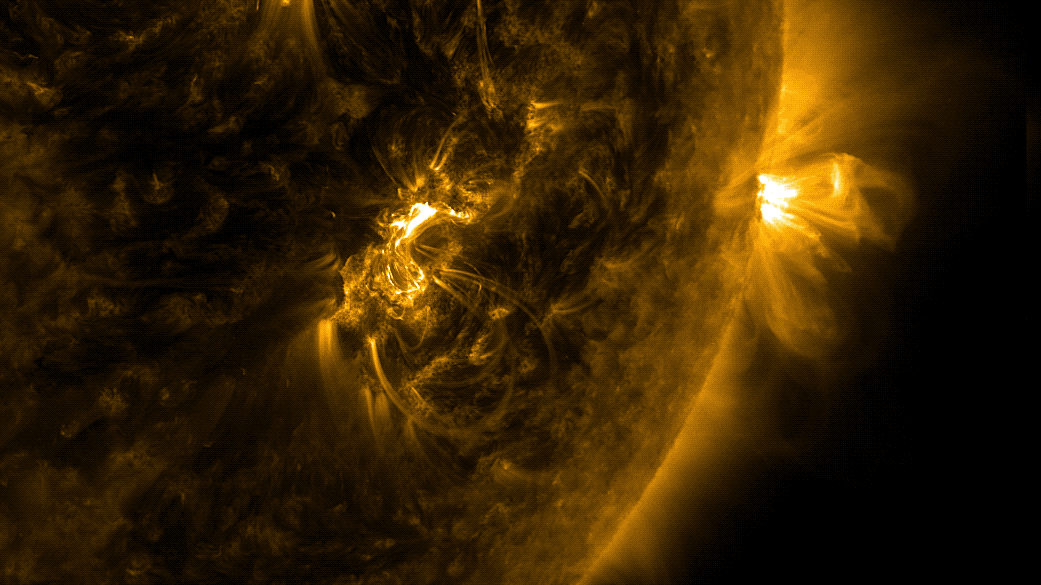Image courtesy: NASA
[Editor’s note: Kuva Space was previously known as Reaktor Space Lab from the formation of the company in April 2016 until the end of September of 2021. This blog post was written before the Kuva Space brand renewal.]
Solar storms can have serious effects on life on Earth. There are several dramatic examples of this, such as the geomagnetic storm in 1989 that disrupted electric power distribution throughout most of Quebec, Canada. In the future, the effects can be expected to be even more severe, as society relies more and more on communication networks, electronic systems and satellite positioning. Solar storms can also cause danger to passengers traveling on polar airline routes.
The Sun goes through an 11 year cycle between low and maximum activity and it is expected to reach it’s next maximum in 2024. The capability to obtain warnings of solar storms can mitigate risks, save billions of euros and save lives.
The Finnish Meteorological Institute is starting a PECASUS space weather service center, which will improve the predicting and observing of space weather. But in order to improve on space weather predictions, better data is required.
The Sun’s coronal mass ejections emit x-ray pulses which can be observed only from space. Space agencies have long worked on technologies to observe these solar x-rays. To address this issue, ESA conducted a comparison where a Finnish x-ray instrument came out as a clear winner.
The instrument is called SUNSTORM 1 and it was developed by a Finnish industry team led by ISAWARE in a 16 month record time. The instrument will be launched and demonstrated in space using Reaktor Space Lab’s CubeSat platform in 2021. The industry team is composed of ISAWARE, Aboa Space Research Oy, Oxford Instruments Technologies and Talvioja Consulting and the mission is funded by ESA and Business Finland. The instrument will later be sent to space on an ESA’s Lagrange-space weather satellite.
SUNSTORM 1 is a miniaturized x-ray spectrometer that can characterize solar flares with unseen precision and it is the first instrument of its kind with potential for commercial use.
CubeSat-satellites offer new technologies a quick access to space for instrument demonstration and they work as a base for the new generation’s distributed instrument networks. SUNSTORM-1 will be operated in space in a two unit CubeSat. The satellite technology is based on Reaktor Space Lab’s Hello World and W-Cube satellites.
With the exceeding reliance on networks, electronic systems and satellite positioning it is vital to have better systems to predict space weather phenomena. Finland has a great opportunity to become the leading space weather operator and Reaktor Space Lab is proud to be contributing to this goal.


